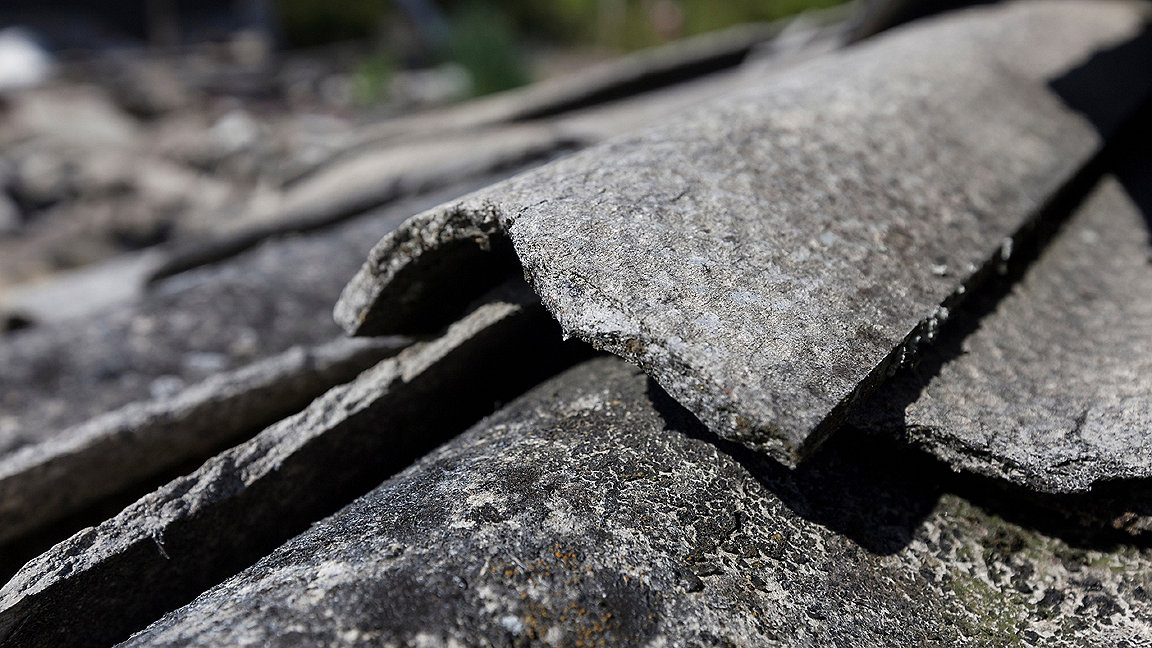
A landmark report analysing UK asbestos management data was published last November – to a less than fulsome reception. Even the property and construction press coverage was minimal, which was strange given that this is the first time that such data has been put together, and the report contained important and disturbing findings relevant to all of us.
The Asbestos Testing and Consultancy Association (ATaC) and the National Organisation of Asbestos Consultants (NORAC), which jointly prepared the report, received no enquiries following its publication except from a few European researchers. It seemed to them that there was more interest in the subject overseas than in the UK.
In the months since then, though, interest has grown. There has been more press coverage – including The Times's Act Now on Asbestos campaign highlighting the appalling situation in schools – and, perhaps more significantly, a debate in Parliament. This all builds on the Airtight on Asbestos campaign and a House of Commons Work and Pensions Committee (WPC) inquiry into the issue.
The ATaC–NORAC report publication date was chosen to mark the 20th anniversary of the Control of Asbestos at Work Regulations 2002. Although regulation 4 introduced the duty on building owners and managers to manage asbestos in non-domestic premises, this did not itself come into effect until 2004, giving them, as well as the wider property and construction professions, 18 months to familiarise themselves with its requirements, prepare processes and train staff.
Larger organisations spent that year and a half getting to grips with the new duty: they engaged asbestos consultants, health and safety consultants and surveyors to advise and train staff, devise management systems and set up registers.
However, anecdotal evidence at the time suggested that many organisations were unaware, or only vaguely aware, of the requirements, and doing little to prepare for such a major change. What is the situation now?
'The ATaC–NORAC report publication date was chosen to mark the 20th anniversary of the Control of Asbestos at Work Regulations 2002'
Report analyses extent of issue
The First annual data analysis report into asbestos in UK buildings – to give its full title – was prompted by the WPC inquiry into the Health and Safety Executive's (HSE's) approach to asbestos management, whose own report was published in April last year. The WPC report refers among other things to the lack of information about people's exposure to asbestos.
An assessment of exposure must necessarily take into account the condition of asbestos and the effectiveness of its management. The WPC report summary states that: 'A central register of information on asbestos in buildings could help to shed light on the true level of compliance and could contribute to a more effective risk-based and targeted enforcement regime.' The ATaC–NORAC report is a first step in addressing this using existing data.
The WPC also suggested that 'HSE works with others in government to develop a central digital register of asbestos in all non-domestic buildings', and that a deadline be set for removing asbestos from such buildings within 40 years.
ATaC and NORAC set about collating anonymised asbestos survey information that their member firms – all asbestos survey organisations recognised by the UK Accreditation Service (UKAS) – collected as part of and during their business over a six-month period from October 2021 to March 2022.
This is the first time that such analysis of a large body of data about UK asbestos has been attempted; but the intention is that it will become an annual publication, adding different types of data and new categories in future editions.
That the data was collected by UKAS-accredited firms is significant. UKAS is the national accreditation body for the UK, appointed by the government, to assess and accredit organisations that provide services including certification, testing, inspection and calibration.
It covers accreditation for both asbestos surveying and testing, and assesses firms' systems and their operation for initial accreditation, before regular formal review and reassessment to ensure continuing, consistent high standards.
Ineffective practice points to need for education
The report summary states that:
- of the 128,761 buildings inspected, 78% – a total of 100,660 – were found to contain asbestos
- in those 100,660 buildings, 710,433 items of asbestos were found
- of the 710,433 items, 71% – 507,612 – were recorded as having some level of damage
- of the 507,612 damaged items, 24% – 120,629 – would be classed as licensable work and require a specialist contractor.
It goes on to say that the report's analysis 'indicates that there is currently a high proportion of asbestos materials in UK buildings that could present a potential risk to public health, and which need remediation or removal'.
The summary further states that 'a proportion of the sample data for materials in poor condition has been subject to re-inspection. It can be concluded that these items were in good condition at the time of the original survey and have deteriorated, or that the items were in a less-than-good condition and the duty-holder has failed to undertake any action. Either approach would suggest that overall asbestos management in these premises is failing'.
As that statement concludes, these are serious findings that go to the heart of present asbestos management practice, a significant proportion of which is revealed as ineffective at best.
The findings suggest that while asbestos exposure has decreased from an historic high, which was due to now-banned asbestos-based product manufacture, it may not have fallen as much as the HSE has assumed. The result of that continuing exposure could therefore be a higher number of future cases of asbestos-related disease than it has predicted.
According to the HSE, there are now more than 5,000 asbestos-related deaths a year in Great Britain. It is no wonder that it is making efforts to raise awareness, as in its Asbestos and You campaign launched in March. The WPC and ATaC–NORAC reports have, no doubt, contributed significantly to its decision to take such action.
The HSE campaign is aimed in particular at tradespeople who have joined the sector since the comprehensive ban on asbestos came into place in Great Britain in 1999. However, if asbestos management is to be improved, awareness must also be raised and knowledge enhanced among those who are directly responsible for managing asbestos in buildings rather than just those who physically carry out building work.
Building owners and managers as well as other property and construction professionals – such as surveyors and architects who work on pre-1999 properties – also need educating about identifying and dealing with asbestos. The present situation suggests ignorance, confusion or – most likely – both.
Work types require complicated judgements
What else can be done to improve this situation? Many would argue that the present regulations and guidance are too complicated and that they should be reviewed and simplified.
Consider an example: dealing with or removing different types of asbestos-based material includes so-called licensed and non-licensed work, as well as notifiable non-licensed work. Each type relates to particular classes and quantities of material, as well as the nature of the work itself.
Licensed work can only be carried out by a contractor authorised by the HSE, which – as enforcing authority – must also be notified before it starts. Non-licensed work can be performed by an unlicensed contractor and needs no notification, but must be limited in nature and extent. Notifiable non-licensed work must as it name suggests be notified and, again, must be limited; however, it can be caried out by a non-licensed contractor.
Deciding the correct course of action entails assessment and judgement, which in turn requires sound knowledge and comprehension on the part of decision-makers such as clients and the professionals acting on their behalf. It is not necessarily straightforward.
In addition, notifiable non-licensed work means that an employer – that is, any person or company employing workers to remove asbestos – must ensure that suitable training is given, medical examinations are carried out regularly, and health records are kept for 40 years, along with documentation of the location and works carried out.
But there is a great deal of ignorance, and contractors intending to carry out such work are commonly unaware of these requirements. Furthermore, there is anecdotal evidence that, if you ask clients who intend to instruct such work using non-licensed contractors what the requirements are, it is likely that they will not know either. Therefore, they are unlikely to be able to check adequately contractors' competence to do such work.
The ATaC–NORAC report certainly reinforces the notion that there is significant ignorance of asbestos procedures and legal requirements among professionals and clients.
'Many would argue that the present regulations and guidance are too complicated and that they should be reviewed and simplified'
RICS' response
To be competent to practise as RICS members, candidates must demonstrate knowledge, experience and skills to perform a variety of tasks or functions. It's important, however, that candidates and assessors alike interpret these in the context of the former's own area of practice and geographical location.
For example, on the Building Surveying pathway, there is explicit reference to asbestos as part of the Health and safety and Legal/regulatory compliance competencies, and assessors should ask candidates about this topic at their assessment.
Asbestos is not consigned to the past: it remains a current issue, as this article highlights, with the ATaC–NORAC report finding that 78% of the buildings surveyed contained asbestos. RICS will work with members through our various platforms and communication channels to promote greater understanding and awareness of their risks and responsibilities when it comes to asbestos.
For further details, please contact Sam Piplica MRICS, senior specialist, buildings, at RICS
Transforming training will need policy overhaul
So, is it time for RICS and similar professional institutions to consider whether asbestos should be covered more fully in professional practice assessments? The answer is probably yes, considering the evidence that is accumulating.
How RICS might achieve that practically within the present pathways and competencies framework is difficult to imagine. It could perhaps take the form of a separate, monitored online course with an associated examination.
The RICS Health and Safety Advisory Group has considered this approach for health and safety professional accreditation; but the mechanisms for doing so are challenging to design and implement, and the idea has not yet been accepted formally.
However, there is a precedent: the Royal Institute of British Architects is introducing an online mandatory health and safety test that all chartered architects will be required to pass. A move in this direction by all property and construction professional bodies is clearly a matter for serious consideration.
In any case, the HSE and the government should review and simplify the legislation and guidance. Without such change in public policy, many property and construction professionals will continue to find asbestos a more complicated subject than it needs to be – and the evidence suggests that this could lead to avoidable suffering and deaths.
Jeffrey Tribich MRICS is founder of Jeffrey Tribich Consulting and a member of the RICS Asbestos Working Group and RICS Health and Safety Advisory Group
Contact Jeffrey: Email
Related competencies include: Building pathology, Health and safety, Inspection, Legal/regulatory compliance

